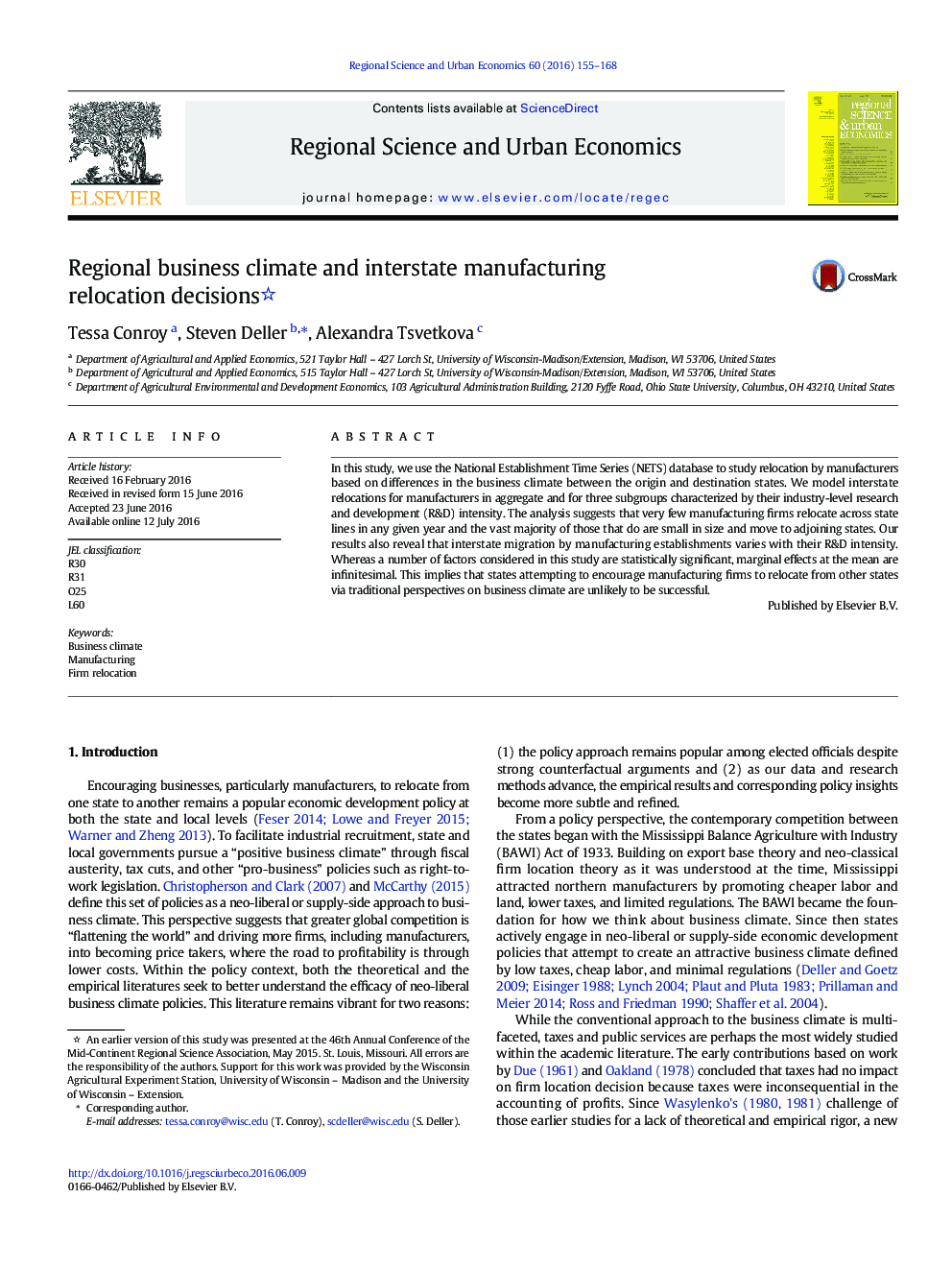| Article ID | Journal | Published Year | Pages | File Type |
|---|---|---|---|---|
| 983636 | Regional Science and Urban Economics | 2016 | 14 Pages |
•Very few manufactures relocate across state lines in any given year.•Relocating manufacturers are usually small and tend to move to neighboring states.•The results show that the key policy levers have expected effect on relocation decisions but economic effects are trivial.•This calls into question the ability of state policies, e.g. tax rate changes, to stimulate manufacturers inflow into state.
In this study, we use the National Establishment Time Series (NETS) database to study relocation by manufacturers based on differences in the business climate between the origin and destination states. We model interstate relocations for manufacturers in aggregate and for three subgroups characterized by their industry-level research and development (R&D) intensity. The analysis suggests that very few manufacturing firms relocate across state lines in any given year and the vast majority of those that do are small in size and move to adjoining states. Our results also reveal that interstate migration by manufacturing establishments varies with their R&D intensity. Whereas a number of factors considered in this study are statistically significant, marginal effects at the mean are infinitesimal. This implies that states attempting to encourage manufacturing firms to relocate from other states via traditional perspectives on business climate are unlikely to be successful.
